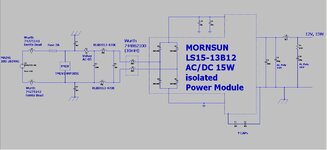cupoftea
Advanced Member level 5
Hi
Is it really going to significantly improve Common mode emissions of an Offline 20W Flyback if i make the input AC filter symetrical?
At the moment i have Fuse-MOV-X2 capacitor-L(Diff mode)-Common mode choke-Diode bridge.
If i split the L(diff mode) into two and make the filter symetrical, will it really improve things?
Is it really going to significantly improve Common mode emissions of an Offline 20W Flyback if i make the input AC filter symetrical?
At the moment i have Fuse-MOV-X2 capacitor-L(Diff mode)-Common mode choke-Diode bridge.
If i split the L(diff mode) into two and make the filter symetrical, will it really improve things?
Last edited:
